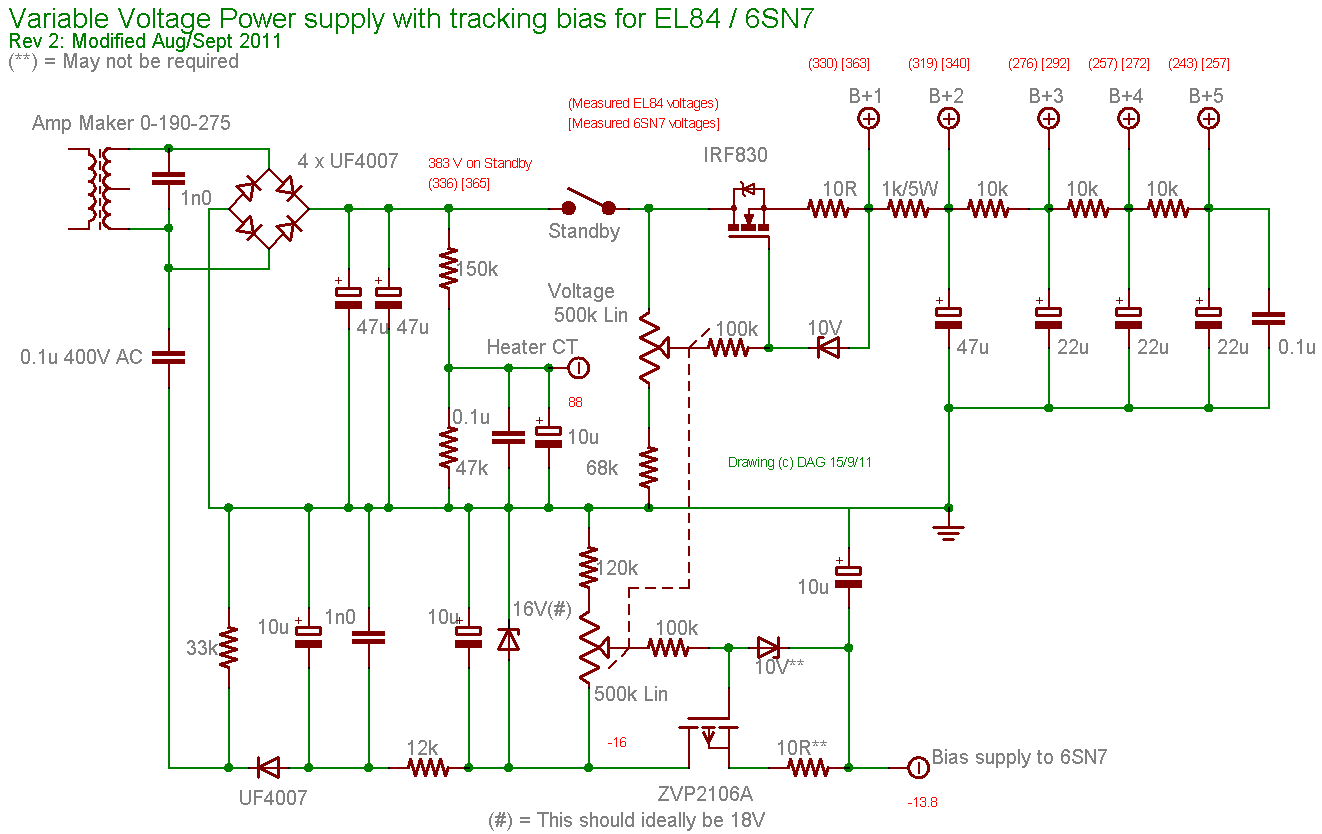MatthewF
Well-known member
Hi all,
I've had good results using the uppermost circuit in the attached diagram to implement variable B+ in a cathode biased tube guitar amp output stage. I'm now looking to implement a similar control in a fixed bias amp, and will therefore need a means of adjusting the grid bias voltage in tandem with B+.
The second circuit in the attachment claims to do just that, but I'm a little confused over the implementation. Why has the designer chosen to take a fixed voltage output form the MOSFET followed by a resistive divider, rather than applying a variable reference to the gate, as per the first circuit? Furthermore, what is the purpose of the MOSFET here? If the bias supply were strong enough, surely a simple resistive divider would be all that's required?
Any pointers would be very much appreciated!
I've had good results using the uppermost circuit in the attached diagram to implement variable B+ in a cathode biased tube guitar amp output stage. I'm now looking to implement a similar control in a fixed bias amp, and will therefore need a means of adjusting the grid bias voltage in tandem with B+.
The second circuit in the attachment claims to do just that, but I'm a little confused over the implementation. Why has the designer chosen to take a fixed voltage output form the MOSFET followed by a resistive divider, rather than applying a variable reference to the gate, as per the first circuit? Furthermore, what is the purpose of the MOSFET here? If the bias supply were strong enough, surely a simple resistive divider would be all that's required?
Any pointers would be very much appreciated!




